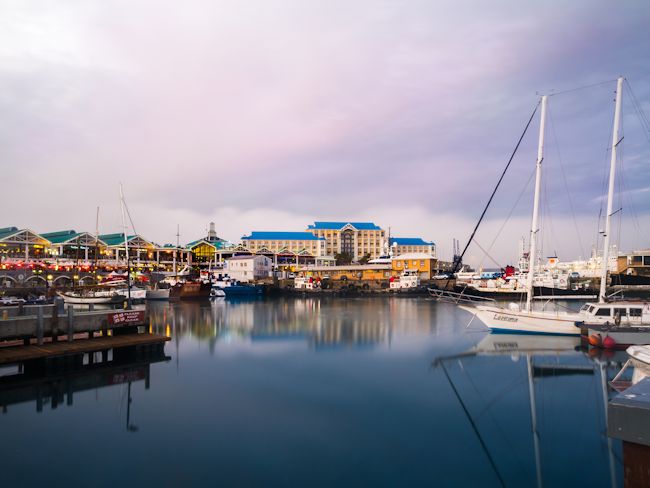
by Wayne Troughton, CEO, HTI Consulting
The year 2016 was a busy and interesting one for the African hotel market. Hotel investment in Africa made progressive strides, with new hotels launched in new countries and cities across the continent and economic and political events, currency volatility and fluctuating tourism demand bringing both challenges and opportunities to hotel markets across the region.
African-based specialist hospitality, real estate and leisure consulting company, HTI Consulting, here provide a brief summary of the top five and bottom five performers across 13 African cities for 2016, as indicated by STR Global. Occupancy rates, Average Daily Rates, rooms sold and future supply have all been taken into account.
Occupancy rates Of the top 5 cities showing the highest growth in occupancy rates, four were based in Southern Africa, with three of these in South Africa. Cape Town achieved the highest growth in occupancy of the 13 cities assessed (6.5%). Continued growth in international leisure tourism and the introduction of additional direct international flights were key contributing factors for the Mother City. Lagos (Nigeria) showed the second highest growth, though this was not sufficient to offset the -11.4% occupancy decline experienced at the end of 2015. Occupancy growth in Durban and surrounds (2.4%), excluding Umhlanga, was driven largely by government business, as well as ICC related activity and sustained demand from the domestic leisure sector. The growth in Lusaka (Zambia) was largely due to an unusually high number of conferences hosted by the city in 2016.
In terms of declining occupancies, Accra (Ghana) and Addis Ababa (Ethiopia) experienced negative growth. Negative growth in Accra is ascribed to new hotel supply (37.8% increase) and is expected to be a short-term trend given increasing demand for accommodation in the Ghanaian capital. New supply in Addis Ababa (launch of 136-key Ramada Hotel), combined with decreased demand driven by the declared state of emergency, placed significant pressure on market occupancy in the city. New Government policies in Tanzania and a shift in Government demand to more affordable accommodation, reduced occupancy in Dar es Salaam by more than 5%. Weakened investor sentiment in Zimbabwe also continued to limit opportunities for growth in the Harare hotel market.
Average Daily Rates Lusaka and Cape Town were the only cities to achieve Average Daily Rate (ADR) increases in US dollar terms in 2016. Although the rand depreciated significantly against the dollar at the end of 2015 (USD1 = ZAR 15.47), by the end of 2016, the currency had strengthened to USD 1=ZAR 13.74. In local currency ADR increased by more than 10%. Local currency ADR also increased in cities such as Dar es Salaam, Nairobi and Windhoek although these showed declines in USD terms
Lagos and Accra experienced the largest declines in ADR in US dollar terms (in excess of 10%). Depreciation of the Nigerian naira against the dollar was the primary cause of lower ADR’s in Lagos, though in local currency ADR increased by 7.9%. The opening of the Kempinski hotel, that increased room supply by 269 rooms, compounded the increasingly competitive market in Accra. , New supply drove rates downward, though international standard hotels maintained rates so as to only experience marginal decreases in ADR. Low levels of demand in Harare drove rates downward, whilst currency fluctuations and new supply in Gaborone (Botswana) influenced lower ADR (in USD terms). In local currency, however, ADR in Gaborone only declined by -1.1% in the city.
Room sales Although occupancy levels in Accra declined, number of rooms sold increased by more than 20%, with demand steadily recovering after the decline in rooms sold between 2014/2015. Nairobi followed a similar trend to Accra with an almost 10% increase in room supply (Tune Hotel – 208 rooms) and a corresponding 8.7% increase in rooms sold. In Cape Town (4.6%), Lagos (6.3%) and Durban (3.5%), demand growth increased at a higher rate than supply. Growth in Lagos was significant when considering the -8.0% decline in rooms sold between 2014 and 2015. Addis Ababa was the weakest performer in terms of demand growth in 2016 with an almost 10% decline in the number of rooms sold. New supply (Ramada – 136 rooms), combined with a decline in demand, continued to place occupancy levels under pressure. Rooms sold in Dar es Salaam also declined due to the aforementioned changes in Government policy. Reduction in government accommodation budgets also displaced demand to more affordable hotels outside of the main Dar es Salaam CBD and Peninsula areas.
Future Hotel Supply The hotel pipeline under construction is highest in Addis Ababa. Considering the decline in demand in 2016 the market could be placed under considerable pressure in the near term. Nairobi also has a strong development pipeline, however recovery in the tourism sector is evident. This market is likely to be subdued in the medium term, though the long-term outlook is positive. Cape Town’s booming market is likely to slow in the short term, particularly in the midscale and upscale space as new supply comes on-line. However, should the market continue to grow at its current pace, the impact of new supply will be short term. Accra and Lagos have shown demand recovery in 2016 and it is hoped that continued growth in demand in these markets will limit the impact of growing supply.


